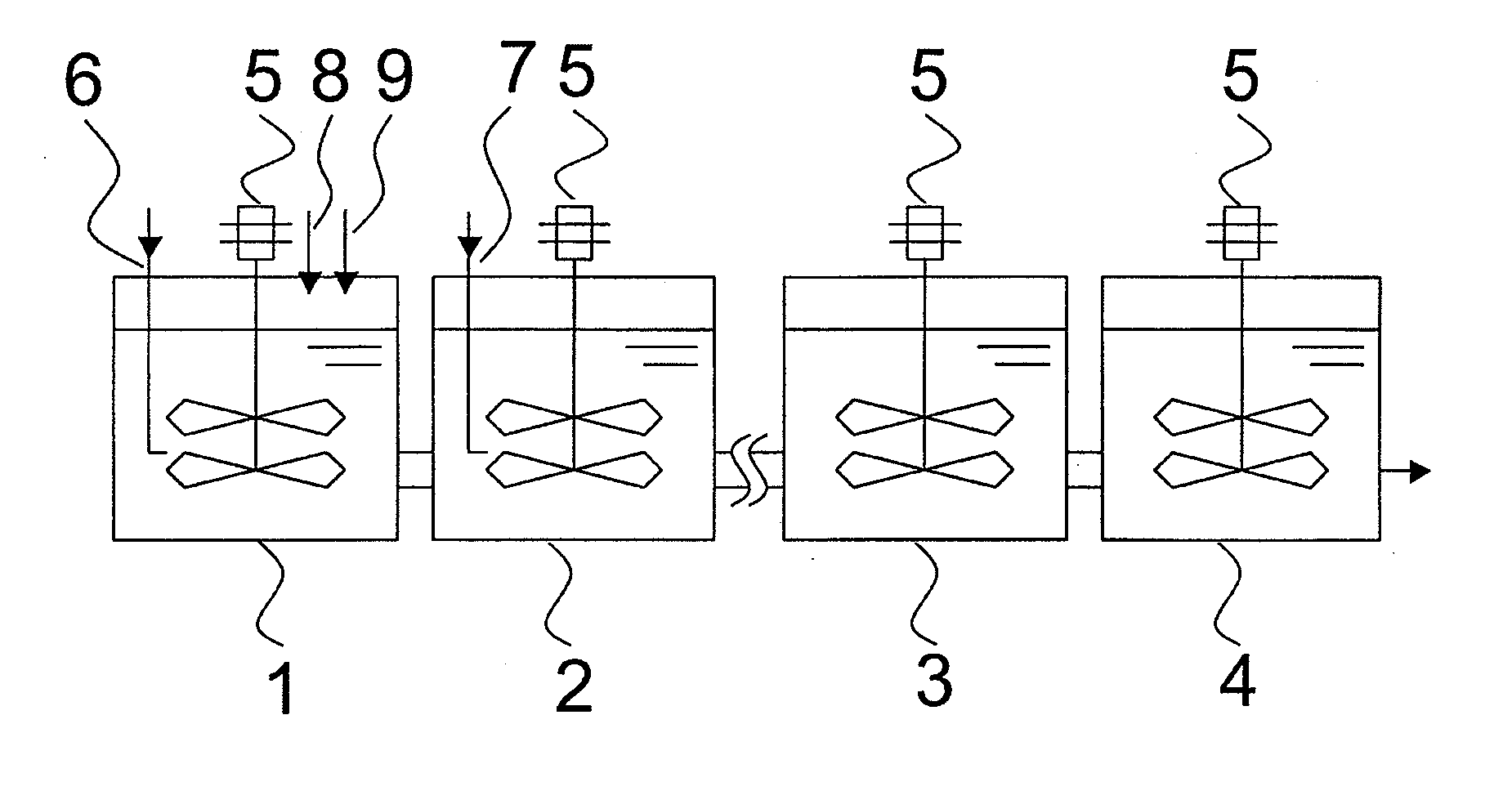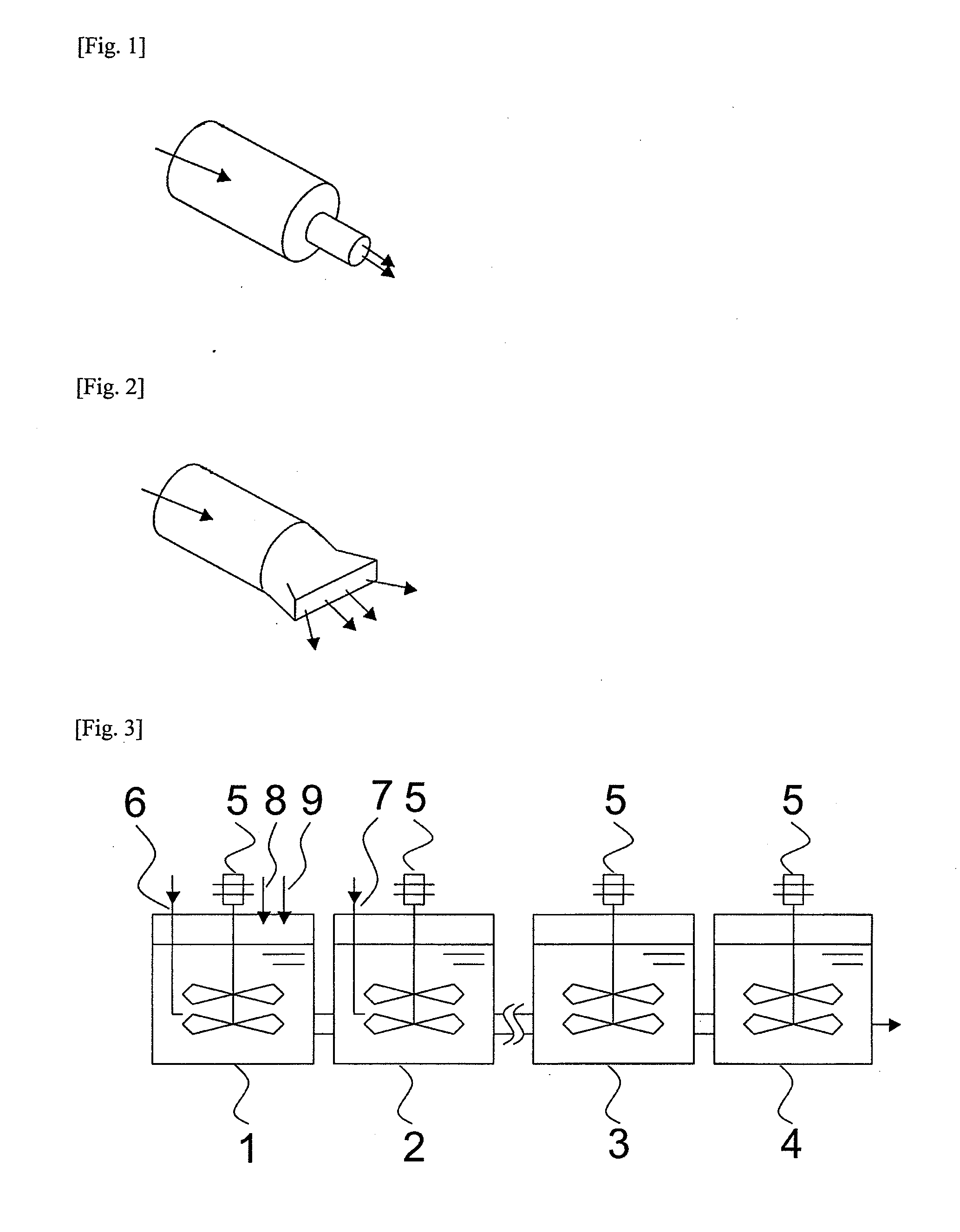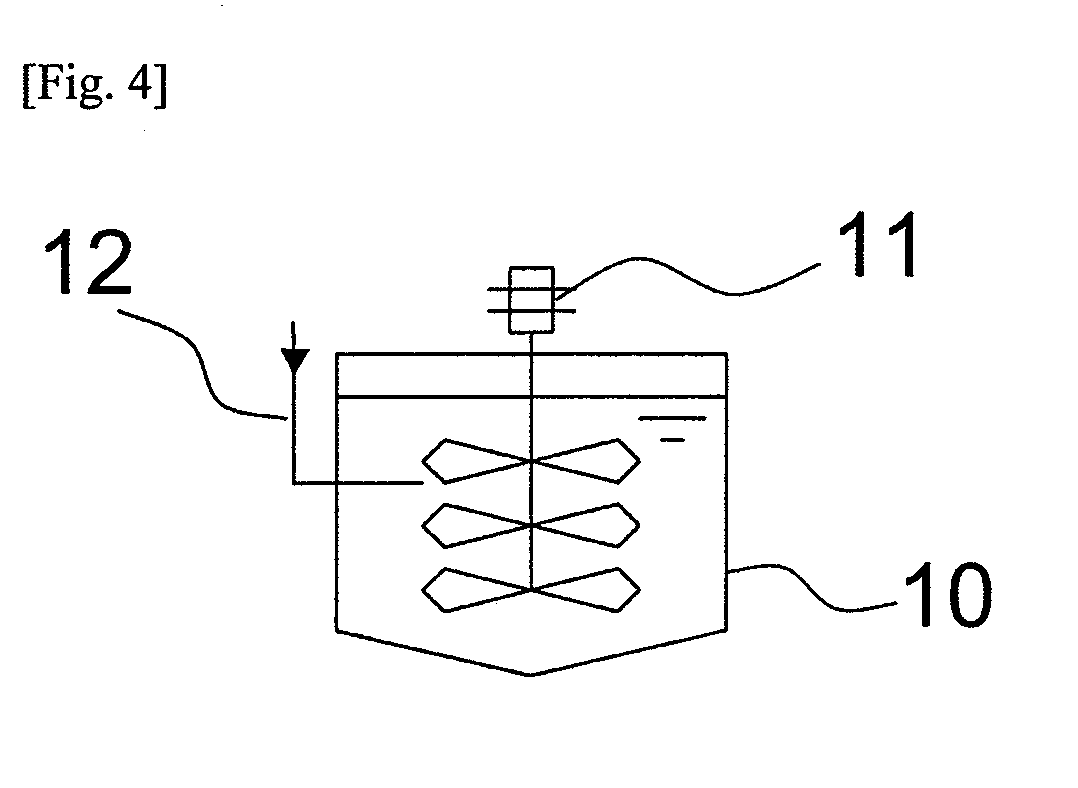Method for producing acrylamide using microbial catalyst
a technology of acrylamide and microbial catalyst, which is applied in the direction of biochemistry equipment, biochemistry apparatus and processes, fermentation, etc., can solve the problems of decreased activity, increased loss of acrylonitrile by evaporation into the gas phase, and decreased catalyst productivity or deterioration of microbial catalyst, so as to prevent the damage of microbial catalyst by stirring, the effect of high contact efficiency and low cos
- Summary
- Abstract
- Description
- Claims
- Application Information
AI Technical Summary
Benefits of technology
Problems solved by technology
Method used
Image
Examples
example 1
[0057]In a 1-L stirring vessel equipped with a jacket cooler (inner diameter of the vessel: 10.5 cm), an SUS pipe (inner diameter: 6 mm) was placed as an acrylonitrile feed tube which supplies acrylonitrile, such that the open end (feed opening) of the tube was positioned at a height of 3 cm from the bottom of the vessel. To this stirring vessel, 621 g of 50 mM phosphate buffer (pH 7.0) and 1.5 g of a bacterial cell suspension as a microbial catalyst were fed, and the liquid temperature was controlled to 21° C. by allowing cooling water at 5° C. to flow through the jacket. At this time, the position of the feed opening was 4 cm below the liquid level. The shortest distance between the feed opening and its closest paddle blade was 1 cm.
[0058]While the liquid temperature in the vessel was kept at 21° C., acrylonitrile with a purity of 99.7% was fed to the vessel via the acrylonitrile feed tube to start the reaction. During the reaction, the reaction liquid was mixed by stirring with a...
example 2
[0060]The reaction was carried out in the same manner as in Example 1 except that an additional SUS pipe having an inner diameter of 2 mm and a length of 2 cm was connected to the acrylonitrile feed tube such that the open end (feed opening) of this additional pipe was positioned at a height of 3 cm from the bottom of the vessel. The linear velocity of acrylonitrile at the feed opening was 0.04 m / s.
[0061]Eight hours after the beginning of the reaction, the reaction liquid was subjected to measurement by gas chromatography in the same manner as in Example 1, and, as a result, 10 ppm unreacted acrylonitrile was detected, and 50.4% acrylamide was detected. The yield of acrylamide from acrylonitrile was 99.7%. The conditions for supplying acrylonitrile and the reaction results are shown in Table 1.
example 3
[0067]Six 1-L stirring vessels each equipped with a jacket cooler (inner diameter of the vessel, 10.5 cm; liquid depth, 11.5 cm) were connected in series. The first vessel was connected to the second vessel through a pipe communicating with the insides of these vessels at positions expected to be below the liquid levels during the reaction. Similarly, the second vessel and the third vessel, the third vessel and the fourth vessel, the fourth vessel and the fifth vessel, and the fifth vessel and the sixth vessel are connected to each other. In the sixth vessel, a pipe for discharging the liquid in the vessel was provided at the bottom of the vessel.
[0068]In each of the first, second and third vessels, an SUS pipe for feeding acrylonitrile (inner diameter, 6 mm) was provided as an acrylonitrile feed tube such that the open end (feed opening) of the tube was positioned at a height of 3 cm from the bottom of the vessel (8.5 cm below the liquid level).
[0069]Further, to the first vessel, a...
PUM
| Property | Measurement | Unit |
|---|---|---|
| speed | aaaaa | aaaaa |
| Froude number | aaaaa | aaaaa |
| Froude number | aaaaa | aaaaa |
Abstract
Description
Claims
Application Information
 Login to View More
Login to View More - R&D
- Intellectual Property
- Life Sciences
- Materials
- Tech Scout
- Unparalleled Data Quality
- Higher Quality Content
- 60% Fewer Hallucinations
Browse by: Latest US Patents, China's latest patents, Technical Efficacy Thesaurus, Application Domain, Technology Topic, Popular Technical Reports.
© 2025 PatSnap. All rights reserved.Legal|Privacy policy|Modern Slavery Act Transparency Statement|Sitemap|About US| Contact US: help@patsnap.com



